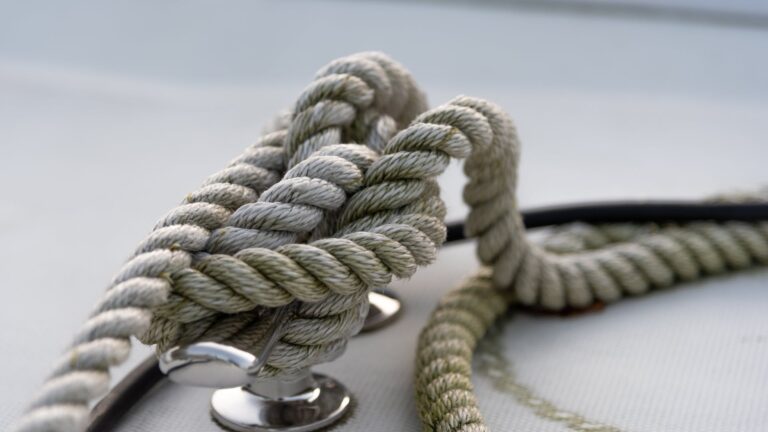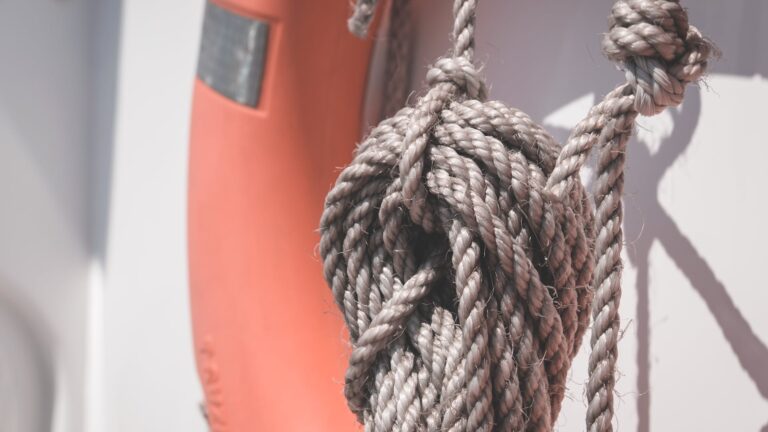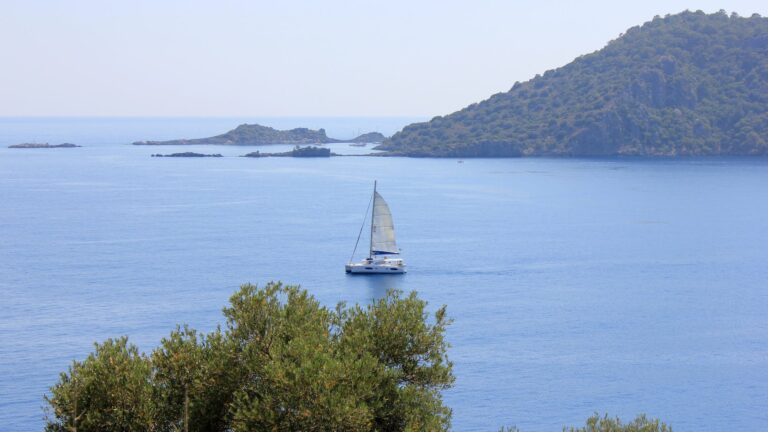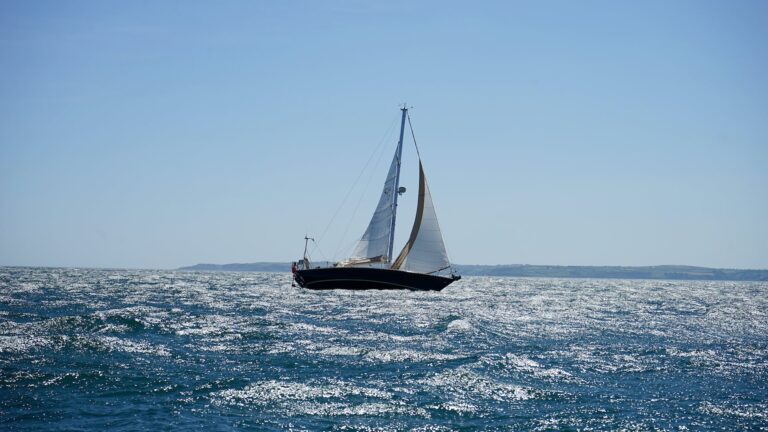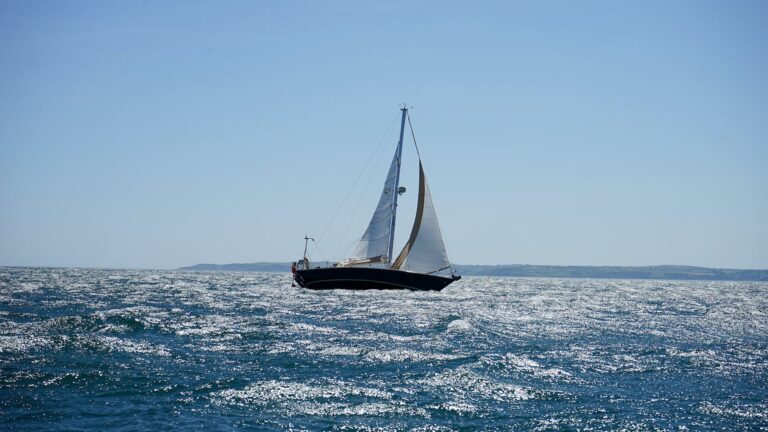What is the best approach heading for anchoring?
- Introduction
- Definition of Anchoring
- Principles of Anchoring
- Types of Anchors
- Preparing for Anchoring
- Heading into the Wind and Tide
- Stopping the Vessel in Position
- Securing the Vessel
- Setting the Anchor Alarm
- Monitoring the Situation
- Conclusion
Introduction: The Art of Anchoring a Vessel At Sea
Anchoring a vessel at sea is an art form that requires skill, knowledge, and experience to master. It is essential for any sailor to understand the best approach heading for anchoring, as it will help ensure a safe and secure anchorage in any situation. This article will discuss what the best approach heading for anchoring is and how to prepare for it safely and effectively.
Definition of Anchoring
Anchoring is a process by which a vessel is secured to the sea floor using an anchor chain, rope, or other mooring device. The anchor is typically connected to the bow or stern of the boat and can be used to keep the vessel in place while at sea or in port. The weight of the anchor keeps the boat from moving in any direction, no matter what wind or tide conditions may arise.
Principles of Anchoring
When anchoring a boat, there are several key principles that must be followed in order to ensure a safe and secure anchorage: (1) Use an appropriate anchor size for your boat’s size; (2) Make sure your anchor chain is long enough; (3) Pay close attention to wind direction and currents; (4) Be aware of obstacles such as sandbars or rocks; (5) Do not anchor too close to another vessel; (6) Monitor your position regularly; and (7) Set appropriate alarms if necessary. Following these principles will help ensure that you have a safe and secure anchorage for your vessel at all times.
## Types of Anchors
There are several different types of anchors available on the market today, including plow anchors, fluke anchors, claw anchors, grapnel anchors, and mushroom anchors. Each type has its own strengths and weaknesses depending on where you are anchoring and what type of bottom you are dealing with (i.e., mud or sand). It is important to select an anchor based on your individual needs as well as local conditions in order to ensure successful anchorage in any situation.
## Preparing for Anchoring
Once you have selected an appropriate anchor type for your needs, it is important to properly prepare your vessel before heading out into open water for anchorage. This includes checking all lines, rigging, shackles, etc., ensuring all safety equipment such as life jackets and flares are onboard, setting alarms if necessary, monitoring weather conditions closely, checking local charts for obstructions such as sand bars or rocks near your planned anchorage position, performing regular engine checks if necessary to maintain power during anchorage if needed, making sure all electrical systems are functioning properly before leaving port, etc.. Taking these steps ahead of time will help ensure that you have a successful and safe anchorage once you reach your destination.
## Heading into the Wind and Tide
Once you arrive at your planned anchorage area it is important to head into wind and tide with speed around 2 knots at 0.5NM from position as this will help reduce drift when setting up your mooring line or anchor chain later on downwind side after arriving on spot where intended mooring line/chain should be placed into water column below surface level reachable by ship’s crew members without difficulty due their safety regulations constraints preventing them from entering water while performing such tasks onboard vessels they work on daily basis while performing their duties following strict regulations set forth by ship owners/operators when sending out vessels with crew onboard them these days..
## Stopping The Vessel In Position
Once you have arrived in position it is important that you give stern movement to stop the vessel over ground so that you can properly set up your mooring line/anchor chain without causing any damage or disruption to other vessels nearby due their negligence when overtaking vessels anchored nearby due their negligence when overtaking vessels anchored nearby due their negligence when overtaking vessels anchored nearby due their negligence when overtaking vessels anchored nearby due their negligence when overtaking vessels anchored nearby due their negligence when overtaking vessels anchored nearby due their negligence when overtaking vessels anchored nearby due their negligence..
## Securing The Vessel
Once you have stopped over ground it is important that you set up your mooring line/anchor chain properly so that it can hold against wind/tide/currents without causing any disruption or damage either to another vessel located nearby or yourself while performing such task onboard while following strict safety regulations set forth by ship owners/operators these days prior sending out any vessel with crew members onboard them these days..
## Setting The Anchor Alarm It is also important to set an alarm system on board so that if there are any changes in conditions such as wind speed or direction which could cause significant drift away from intended spot during night hours then crew members located onboard could be instantly alerted about potential danger ahead allowing them time enough react accordingly prior potential danger becomes reality endangering lives aboard during night hours preventing potential accidents from occurring during night hours aboard those vessels where such alarm systems installed prior leaving port destinations headed towards open waters..
## Monitoring The Situation Once everything has been set up correctly it is important that someone onboard monitors the situation regularly throughout day night shifts making sure everything remains ok without sudden changes occurring unexpectedly drifting motorized sailing vessels away from intended spots were they were initially moored during day shift hours allowing passengers aboard enjoy peaceful night sleep without worrying about being drifted away suddenly potentially endangering lives aboard those motor sailing boats these days..
# Conclusion: Becoming An Expert In Anchoring With knowledge gained from this article anyone should now be able to understand what best approach heading for anchoring involves along with best practices regarding its implementation aboard motor sailing boats during open waters voyages worldwide today allowing passengers safely reach destinations intended by captains operating those motorized sailing boats worldwide today allowing passengers enjoy peaceful nights sleep without worrying about being drifted away suddenly potentially endangering lives aboard those motor sailing boats these days allowing them peacefully reach destinations intended by captains operating those motorized sailing boats worldwide today allowing passengers enjoy peaceful nights sleep without worrying about being drifted away suddenly potentially endangering lives aboard those motor sailing boats these days..



